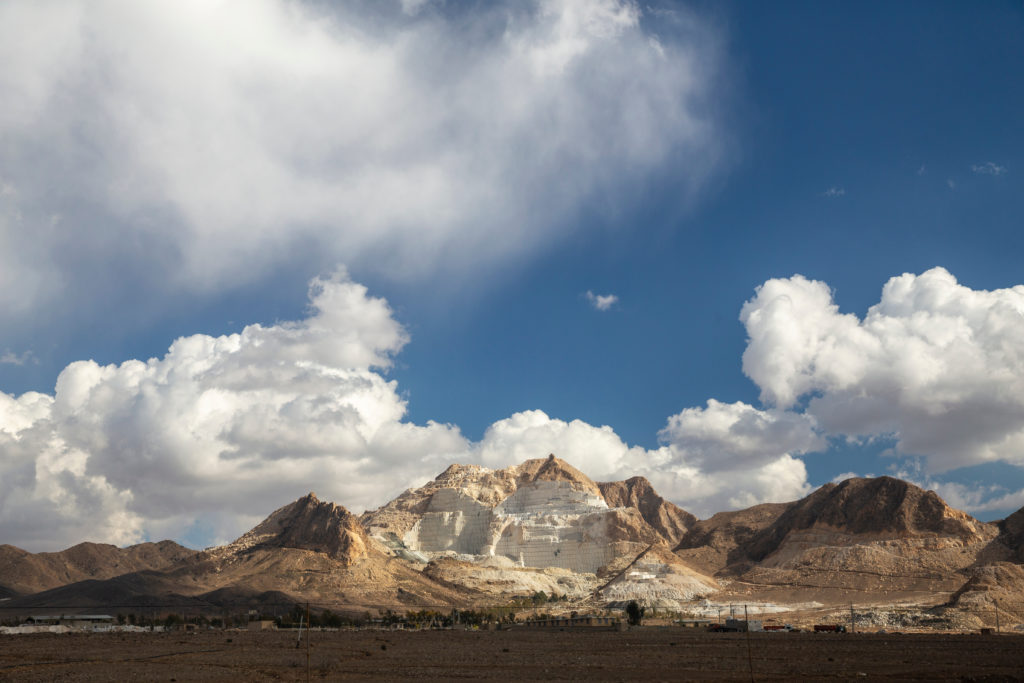Despite its enormous riches, Iran still struggles to operate its mining sector at full capacity. One major cause is a lack of necessary machinery and equipment. To tackle the latter challenge the Iranian government is focusing efforts on supporting an export oriented industry and knowledge-based manufacturers to research and produce new machines as part of areas for development in the extractives sector. Through mining, Iran was able to increase activity generating billions of dollars of hard currency revenues for the country while creating hundreds of thousands of new jobs for its youth.
Ebrahim Ali Molabeigi Iran’s minister of Industry announces “the discovery of the first lithium reserve estimated to be 8.5 million tonnes of lithium carbonate equivalent (LCE) in Hamedan province signalling positive news of the possibility of other reserves in the western Iranian region”.
According to Mohammad-Hadi Ahmadi, the deputy head of the Ministry of Industry, Mining, and Trade Department in Hamedan said “the country will be able to extract lithium from two newly discovered Lithium deposits in the next two years. The deposits cover an area of around 11 square kilometres in Qahavand Plain, located more than 50 kilometres to the east of the provincial capital of Hamedan.
The discovery had taken nearly four years, whereby the Ministry of Industry, Mining, and Trade is currently studying technological capacities existing in two developed countries as part of efforts to start up the mines through a partnership with private investors. The ministry’s authorities expect more lithium ore deposits could be discovered in Hamedan through vast deposits of clay which is a source of Lithium.”
Should the 8.5 million-ton estimate be accurate, it may mean that Iran now holds the second-largest lithium reserve in the world. It will be the largest deposit outside of South America, second only to a 9.2-million-ton deposit in Chile. With global Lithium reserves estimated at 89 million tons, Iran may possibly possess almost one tenth of the world’s Lithium supply.”
Iran’s recent Lithium discovery will shift more attention to mining in the Middle East. Why? Firstly, because the strategic importance of the mineral demanded for most low carbon technologies that contribute to a low carbon future within the global battery and electric mobility ecosystem. Second, the geo-political weight that Iran can use Lithium as natural resource tool to negotiate the uplifting of existing sanctions imposed by the West (United States, European Union and its allies).
Third, Iran can market it’s mineral potential to further attract foreign investment of hard currency into the economy from Lithium exploration. Fourth which holds wider geo-political importance, Iran may leverage Lithium to further enhance its Sino-Relations with China. For example, Iran and Saudi Arabia agreed to restore diplomatic ties under a deal facilitated by China.
China is the largest consumer of lithium due to electronics manufacturing and EV industries, producing more than three-quarters of the world’s lithium-ion batteries and controlling most of the world’s lithium-processing facilities leading the global battery race.
There remains a wider set of geo-political implications that may shift the fate of diplomatic relations between nations. Will the West re-establish negotiations with Iran and lift their sanctions if it means gaining access to Lithium which is demanded for their Battery and EV industries? Does the recent discovery by Iran further raise tensions with its neighbours?
Iran is the first in the Middle East to announce a lithium discovery, will this further push other countries in the region to explore their mining sector potential with a focus on searching for critical minerals and battery metals? Will lithium be the cause of an invasion and political instability in the Middle East? Will new alliances and mineral diplomacy form between countries?
No one can predict how the future will unfold, all implied geo-political questions and statements above present possible scenarios. As the Middle East’s first entrant into lithium, all eyes will be on Iran. Finding lithium in the region indicates that the middle east mining sector may become a new and key player supplying battery metals and critical minerals contributing to the global battery and electric mobility ecosystem.
Jamil Hijazi is a Mineral Economist and reporter who holds a Dual Master’s Degree from the University of Dundee Centre for Energy, Petroleum, Mineral Law, and Policy (CEPMLP). His expertise and research interests are in: Supply Security of Critical Minerals, Energy transition, Industrial Policy, Economics of Mining and Metal Markets.

